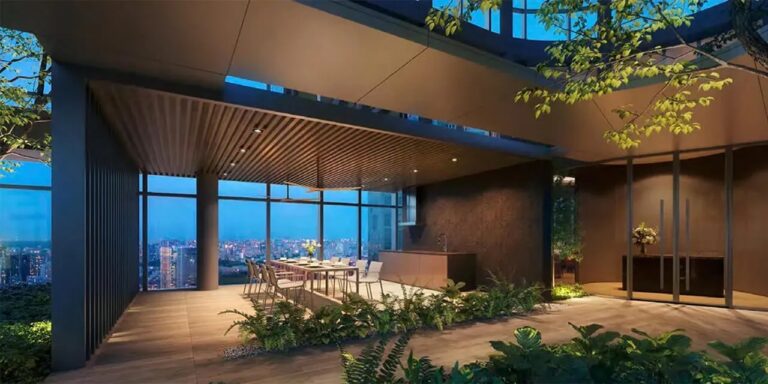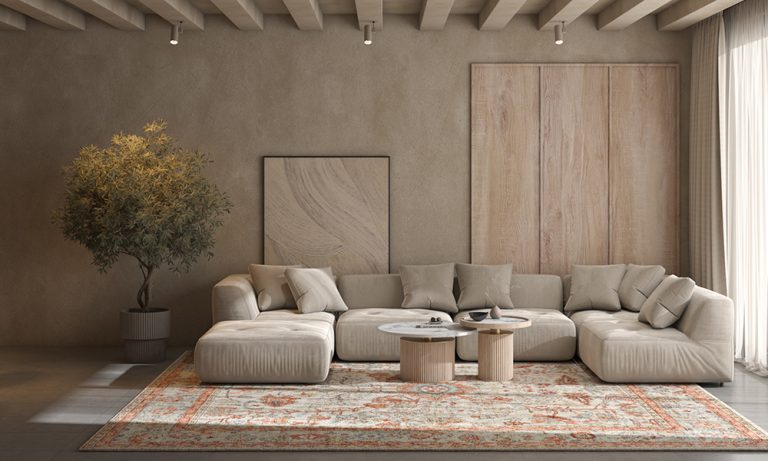
Some gardens have a knack for pulling you in, as if every path and border has been quietly waiting for you to notice.
Raised beds can help create that same feeling, giving shape, order, and a touch of artistry to even the simplest plot.
With the right approach, they’re as practical as they are beautiful, making your space easier to tend and a joy to spend time in.
1. Pallet Wood Raised Bed
Shops, warehouses and small workshops often give away pallets for nothing, happy to see them gone, and there’s a real pleasure in rescuing those old frames from the scrap heap to turn them into something productive.
Before you build, just make sure the timber hasn’t been treated, as you’ll want it as clean and natural as the soil you’re filling it with.
Dismantle the pallets carefully so the boards stay intact, then fix them into a sturdy rectangle that’ll stand firm through the seasons.
Furthermore, a lining of landscape fabric will keep soil where it belongs and slow down erosion, while a natural oil or vinegar wash gives the wood resilience without adding anything unpleasant to the mix.
To add a decorative flourish, you could attach small trellis panels on one side, which will support climbing plants like edible peas or ornamental sweet peas and bring both height and charm.
Meanwhile, installing drip irrigation along the base will provide steady watering without wetting the foliage, and finally, by placing the bed where the sun lingers, you’ll create something thrifty, attractive, and full of potential.
2. Breeze Block Raised Bed
Breeze blocks may not shout for attention, but they reward anyone who sees their potential.
They’re inexpensive, easy to find, and can be stacked into neat shapes—tidy squares, longer rectangles, or gentle curves.
Because the blocks absorb heat during the day, they’ll offer plants a gentle boost when nights turn chilly, while lining the inside with heavy plastic helps keep soil in place and locks in a bit of moisture.
You can even leave a few holes in the arrangement to tuck in low herbs or trailing flowers, breaking up the solid lines with a soft green spill.
An extra benefit is their strength against pests, as slugs and snails often struggle to climb the coarse surfaces, protecting delicate seedlings.
For more stability, especially on sloped ground, set the first row into a shallow trench before stacking. If plain grey isn’t your taste, non-toxic outdoor paint can turn the bed into a cheerful feature.
This low-cost, sturdy choice works just as well in a city courtyard as in a larger plot, though if you want something with a sleek, modern edge, a metal trough could be the perfect fit.
3. Metal Trough Raised Bed
For those who favour a crisp, modern touch, galvanised metal troughs are a striking option.
They’re easy to source from agricultural suppliers and online sellers, and their sturdy construction means they’ll stand up to years of use with very little fuss.
Before adding soil, drill drainage holes in the base to prevent water from sitting, then line with landscape fabric to hold everything neatly in place.
Once filled with a rich mix of compost and soil, you’ll have a clean, sleek container ready for planting.
The metal sides retain warmth, giving heat-loving plants like tomatoes or chillies a helpful nudge in cooler climates.
For added visual appeal, cascading flowers such as lobelia or nasturtiums can soften the lines and draw in pollinators. A single trough can work as a focal point, or you can group several in varying heights for more visual rhythm.
Their reflective surface pairs beautifully with bold planting, and they suit both rural and urban gardens. However, if you’re drawn to something more timeless, stone or brick might be the answer.
4. Stone or Brick Raised Bed
Stone and brick have a way of settling into a garden as if they’ve always been there.
Whether sourced from a reclamation yard or bought new, their weight and texture bring a sense of permanence that lighter materials can’t match.
You can keep the shape straight and formal or let the bed curve to follow the land, blending in with its surroundings. Dry-stacking without mortar makes it easier to adjust as you build and improves drainage too.
The only place not to compromise is the base, as a level, compacted foundation is essential for long-term stability.
If you want the design to complement the wider landscape, a professional garden design service can help create a structure that works harmoniously with your outdoor space.
Once filled with fertile soil, these beds become features that’ll reward the effort for decades. And if hauling stone isn’t your idea of fun, a garden specialist can take the heavy work off your hands while still delivering something built to last.
5. Recycled Wood Crates Raised Bed
Old wooden crates have a ready-made charm, each one carrying its history.
They’re often sold cheaply by markets or even given away, and they lend themselves perfectly to tiered or standalone raised beds.
Because they’re already raised, you’ll spend less time bending and more time enjoying the work. Stack the crates to create height, fastening them with screws so they stand firm. A liner will keep soil from spilling out and help the wood hold its shape.
One clever adaptation is to fit castor wheels underneath, making it easy to move the crates to follow the sun or shelter plants from bad weather.
You can also slip in a thin insulation layer between the liner and the wood, helping protect roots during sudden temperature changes. A coat of safe, weatherproof sealant will extend their life, and a sunny position will keep plants thriving.
They can be kept in tidy rows for order or scattered for a more relaxed, cottage-garden feel. And if portability is your priority, fabric beds could be the most flexible choice of all.
6. Fabric Raised Bed
When flexibility is what you need, fabric beds make a clever solution.
Made from tough landscaping fabric or repurposed tarpaulin, they can be shaped, stitched and filled in less than an afternoon.
The breathable fabric encourages strong root growth, and with a good soil-and-compost mix, plants settle in quickly. Because they’re light, you can shift them around to chase the sun or freshen up the layout.
In small gardens or on balconies, fabric beds can also act as seasonal pop-ups. Fill them with salad leaves in spring, swap to vibrant bedding plants in summer, then use them for bulbs over winter.
For tidier results, you can secure the corners with short bamboo stakes, keeping edges upright even after heavy rain.
A wooden frame will help them keep their shape, and bright fabric choices can turn them into bold accents on a balcony or patio.
Conclusion
You’ve now got the know-how to create raised beds that are as personal as they are practical. Every spade of soil, every seed sown, will bring you closer to a garden that feels truly yours.
Here’s to building, planting and enjoying something that’ll flourish for years to come.





